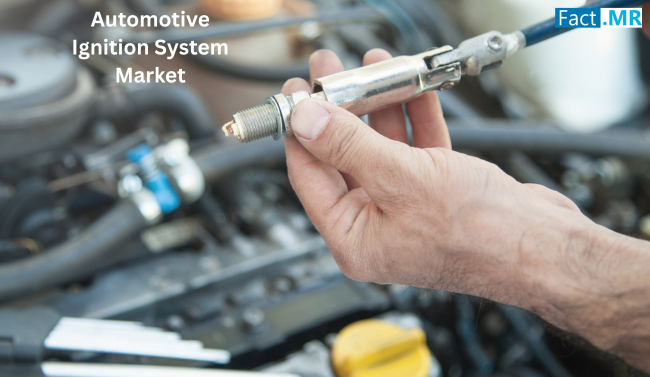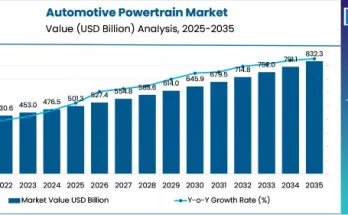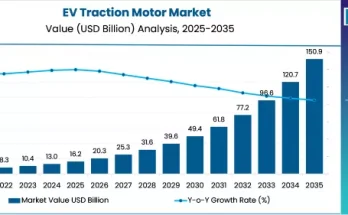As the automotive industry shifts into high gear toward more sustainable, efficient, and intelligent technologies, ignition systems are taking center stage. These crucial components are no longer just about starting the engine — they now play a key role in performance optimization, emissions control, and hybrid system integration.
The global Automotive Ignition System Market is set for significant expansion, expected to grow from approximately USD 10.9 billion in 2024 to over USD 30 billion by 2035, reflecting a strong CAGR of 10%. With rising regulatory pressures and demand for cleaner, more fuel-efficient vehicles, ignition technologies are evolving rapidly and creating a wide avenue of opportunities for OEMs, component suppliers, and investors.
Market Segmentation: Type, Vehicles, Components, Regions
By Ignition System Type
Electronic ignition systems — such as coil-on‑plug and distributor-less variants — are replacing conventional breaker-point systems. These advanced designs offer improved combustion efficiency, reduced emissions, and greater engine control, aligning perfectly with modern automotive demands.
By Vehicle Type
Passenger cars hold the largest market share, driven by the vast number of daily-use vehicles and their need for reliable ignition systems. Meanwhile, two-wheelers and commercial vehicles also contribute significantly, especially in emerging economies with growing vehicle ownership.
By Component
The heart of the ignition system includes:
- Ignition coils: responsible for voltage transformation
- Spark plugs: for air-fuel mixture ignition
- Distributors and switches: for timing and firing control
- Supporting parts like resistors, relays, and control modules are increasingly being integrated into compact, modular units that support modern ECUs and smart diagnostics.
By Region
- Asia Pacific leads the global market due to booming automotive production and strong consumer demand in countries like China, India, and South Korea.
- North America and Europe are seeing renewed ignition system demand due to hybrid adoption, stringent emissions rules, and advanced engineering requirements.
- Latin America and Middle East & Africa are growing steadily as infrastructure improves and vehicle ownership expands.
Key Growth Drivers
- Emissions Regulations
Global efforts to cut carbon emissions are driving OEMs to adopt high-performance ignition systems that enable cleaner combustion and better engine efficiency. - Hybrid and Start-Stop Vehicle Growth
Even as the industry embraces electrification, hybrid vehicles continue to dominate transitional phases. These vehicles require highly efficient, smart ignition systems to manage frequent start-stop cycles and dual power modes. - Aftermarket Expansion
As the global car park ages, aftermarket replacement parts for ignition systems — especially spark plugs and ignition coils — remain in high demand. This is especially true in developing countries, where vehicle lifespan is longer. - Technological Innovation
Smart ignition modules, self-diagnosing coils, and high-energy spark delivery systems are revolutionizing performance. These innovations are also enabling predictive maintenance, reducing downtime, and improving engine control strategies.
Regional Market Highlights
- Asia Pacific remains the top growth engine, supported by rising disposable incomes, urban mobility trends, and continued dominance in vehicle production.
- North America shows strong adoption of electronic ignition technologies in both passenger and light commercial vehicles.
- Europe continues to lead in sustainable vehicle innovation, with growing emphasis on hybrid-compatible ignition systems.
- Latin America and MEA are progressing with improved aftermarket networks and increased OEM footprint.
Competitive Landscape
Key players shaping the future of the ignition system market include:
- Automotive OEMs
- Tier 1 component manufacturers
- Specialized ignition system developers
These companies are investing in product innovation, R&D, and strategic alliances to strengthen their position in both traditional and hybrid segments.
Notable trends include:
- Development of ignition systems compatible with turbocharged and downsized engines
- Focus on plug-and-play ignition modules for easy maintenance
- Expansion into emerging markets through partnerships and regional manufacturing hubs
Strategic Implications
- OEMs should prioritize ignition systems that integrate seamlessly with hybrid powertrains and comply with evolving emission norms.
- Parts Suppliers must invest in scalable, smart components that deliver both performance and durability.
- Distributors and Service Chains can capitalize on growing aftermarket demand by stocking advanced and compatible replacement components.
- Investors and Analysts should keep an eye on this high-growth segment as internal combustion remains relevant alongside hybrid and EV solutions.
Final Thoughts
While electric vehicles continue to capture headlines, internal combustion engines — especially in hybrid formats — remain the dominant force in global mobility. Ignition systems are evolving fast to keep up with the demands of modern engines, cleaner energy use, and connected vehicle ecosystems.
The Automotive Ignition System Market is not just sustaining growth; it’s igniting a new era of smart performance and sustainable engineering. For businesses across the automotive value chain, this is a market segment that offers innovation, profitability, and a front-row seat to the future of mobility.



